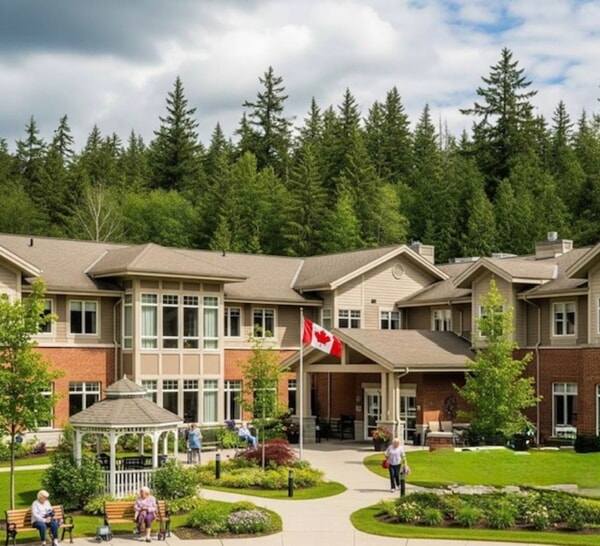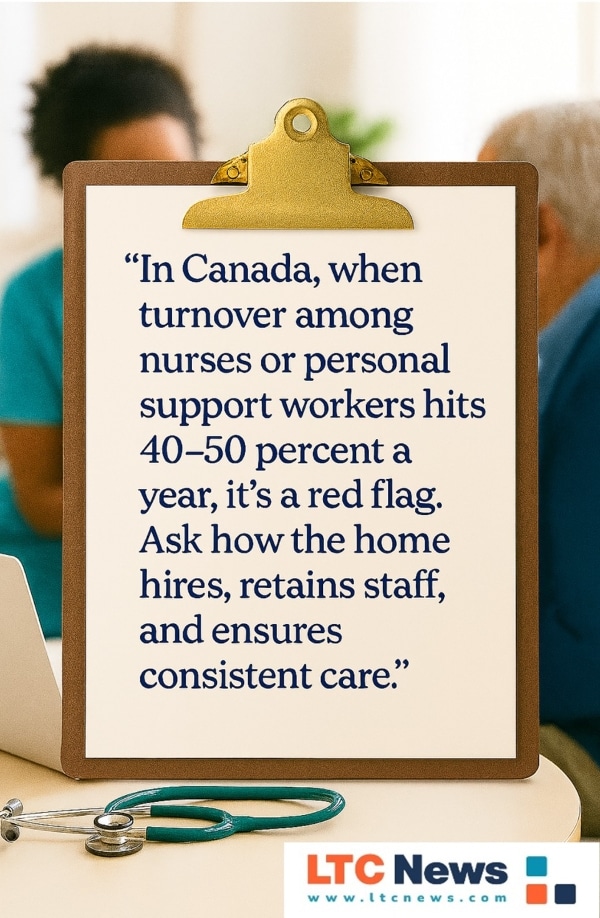How to Spot a Quality Retirement Home or Long-Term Care Facility in Canada

Table of Contents
If you're aging yourself or assisting a parent, you already understand how emotional and complex choosing a retirement home can be. According to the Canadian government, elder abuse or mistreatment affects between 4 and 10 percent of older Canadians, making the quality of a residence a critical consideration.
Your loved one deserves a place that emphasizes safety, provides personalized extended care, and fosters a genuine sense of community. Yet, like families everywhere, many Canadian households find themselves in crisis because they have not discussed or planned for this transition ahead of time. The good news is that Canada offers a variety of long-term care and retirement living options, but selecting the right one requires careful attention.
Costs vary significantly. Private retirement homes in Canada often run between C$3,000 and C$7,000+ per month, depending on location, suite size, amenities, and level of care. But these are general ranges and, in some provinces, or lower-tier residences, rates may be lower, and in high-demand urban areas or facilities with high services, rates may be higher. Provincial regulations also differ, so what applies in Ontario may not hold true in Alberta, British Columbia, or Quebec.
Understanding Health and Personal Care Requirements
One of the first steps is assessing an individual’s care needs. In many provinces, retirement residences conduct initial health or functional assessments before admission, which set the framework for the resident’s personalized care plan. Periodic reassessments completed annually or when health changes significantly allows staff to adjust services as needs evolve.
Typical evaluations examine physical health, cognitive status, medications, and ability to perform Activities of Daily Living (ADLs) like bathing, grooming, dressing, toileting, and mobility. Some homes may also consider Instrumental Activities of Daily Living (IADLs), such as housekeeping, laundry, and arranging transportation.
Knowing the Limits of Retirement Homes
Retirement homes, sometimes called “assisted living” or “supportive living,” depending on the province — are intended for older adults who need help with daily tasks but do not require full-time nursing care. In Ontario, retirement homes are regulated under the Retirement Homes Act, 2010, while long-term care homes are governed by the Fixing Long-Term Care Act, 2021.

If your loved one’s condition evolves — for example, advanced dementia, complex medical needs, or high-level nursing care — they may no longer be suitable for a retirement home. In such cases, transitioning to a provincially funded long-term care home is often necessary. Ideally, planning and discussions ahead of time can reduce the stress and urgency of making such a move later
Financial Planning and Affordability in Canada
Money matters. While some Canadians qualify for publicly funded long-term care beds, retirement homes are almost entirely private-pay. Monthly costs average about C$3,000 to C$7,000, depending on the province, but luxury suites in major cities can exceed C$10,000.
Paying for Care
- Personal savings and RRSP withdrawals
- CPP or QPP and Old Age Security
- Employer pensions
- Home equity or downsizing proceeds
- Veterans Affairs Canada benefits (for eligible veterans)
- Long-Term Care Insurance
Canada’s public health insurance system, guided by the Canada Health Act, ensures that medically necessary hospital and physician services are covered without direct user charges. However, long-term care is not one of the core “insured health services” under the Act, so public coverage for extended care is determined by provincial and territorial programs, and it varies greatly across the country.
While provinces and territories oversee long-term care delivery and subsidize parts of it, those subsidies often do not cover the full cost of care. Public funding typically supports clinical services (nursing, therapies) within licensed facilities or at home, but it seldom pays for the full expense of accommodation, meals, and nonclinical personal care in retirement homes or long-stay care settings.
In practice, residents in retirement or long-term care settings often pay out-of-pocket or via private Long-Term Care Insurance for the nonmedical portions of care—particularly room and board and certain daily support services. In some provinces, means-tested subsidies or assistance programs may reduce those costs for low-income seniors, but those supports vary widely and may not cover the full gap.
Every person in Canada deserves to age with dignity, safety, and comfort, regardless of where they live. When long-term care is needed, people want and deserve that care to be high-quality and safe.
—Mark Holland, former Minister of Health, Government of Canada
Long-Term Care Insurance in Canada:
Specialized insurance products can help offset personal care costs in retirement homes or at home. Unlike in the United States, Canada’s Long-Term Care Insurance market is smaller and more concentrated among a few major insurers; however, the basic principles remain the same: buying coverage earlier typically results in lower premiums and easier medical underwriting.
Many Canadians explore LTC Insurance options in their late 40s and 50s as part of retirement planning, but affordable options are available at older ages, depending on your health. This timing helps lock in lower rates before health changes make coverage harder to obtain or more expensive.
Policies typically pay a monthly benefit when you can no longer perform at least two ADLs or have cognitive impairment. Premiums vary by age and health at the time of application, so experts recommend exploring coverage in your 50s or early 60s.
Because regulations differ by province, knowing who oversees retirement and assisted-living facilities is vital.
Regulatory Oversight
- Ontario: The Retirement Homes Regulatory Authority (RHRA) licenses and inspects retirement homes, sets care standards, enforces resident rights, and investigates complaints. It also maintains a public register of licensed homes and inspection results.
- British Columbia: Residences offering assisted living services must register with the Assisted Living Registry under the Community Care and Assisted Living Act. The registry oversees health, safety, registration, investigations, and compliance.
- Quebec: Private seniors’ residences must hold a certificate of compliance issued by the provincial health authority. These certificates ensure that homes meet standards related to safety, services, infrastructure, and operations, and must be maintained and renewed over time.
Staff Qualifications and Turnover
When evaluating a community, ask about staff-to-resident ratios and training. Do employees receive specialized instruction in dementia care, emergency response protocols, and resident rights? High staff turnover can disrupt relationships and care continuity, so a stable, well-trained team is a positive indicator.
As a rule of thumb, if a retirement home or long-term care facility reports staff turnover above 40–50 percent in a year — especially among registered nurses (RNs), licensed practical nurses (LPNs), or personal support workers (PSWs) — that’s a red flag.
Studies from CIHI and provincial health ministries show that chronic staffing shortages and high churn among PSWs and nursing staff are strongly linked to lower care quality and higher rates of adverse events in long-term care homes.
Facilities with turnover at or above that level often rely heavily on agency or casual staff, which can lead to inconsistent care plans, missed medications, and weaker relationships between residents and caregivers. By contrast, homes with lower turnover and more full-time staff tend to show better resident satisfaction and fewer care disruptions.

Inspection Reports and Public Disclosure
In many provinces, inspection or compliance reports are publicly available. For instance, in Ontario, RHRA posts detailed inspection findings, which can help you see past deficiencies or recurring issues. Reviewing these reports offers insight into how consistently a facility meets its obligations.
Despite what you may think, many fine facilities throughout Canada offer a safe environment with a caring and compassionate staff. For example, if you're considering options in Ontario, a Campbellford Retirement Home can offer a mix of personalized care and small-town charm.
Putting it All Together
Choosing a retirement home in Canada means striking the right balance among cost, care, community, and oversight. By becoming familiar with your province’s licensing rules and inspection regime, understanding the types of facilities available, and touring multiple communities, you can choose with confidence.
A truly high-quality retirement home should go beyond meeting basic needs. It should promote independence, protect dignity, encourage social connection, and adapt to evolving care needs, factors closely tied to better physical and mental well-being.
Use publicly available inspection reports, consult expert guidance, and verify staff credentials and turnover. Compare facilities against your own list of priorities—amenities, accessibility, staffing, safety record, programs—and don’t skip speaking with current residents and families.
It’s never too early to plan. Start the conversation now, build a shortlist, and visit your top choices while options are still available. By preparing in advance, you can help ensure your aging loved one enters a safe, respectful, and vibrant community—one that supports their health, dignity, and peace of mind for years to come.


